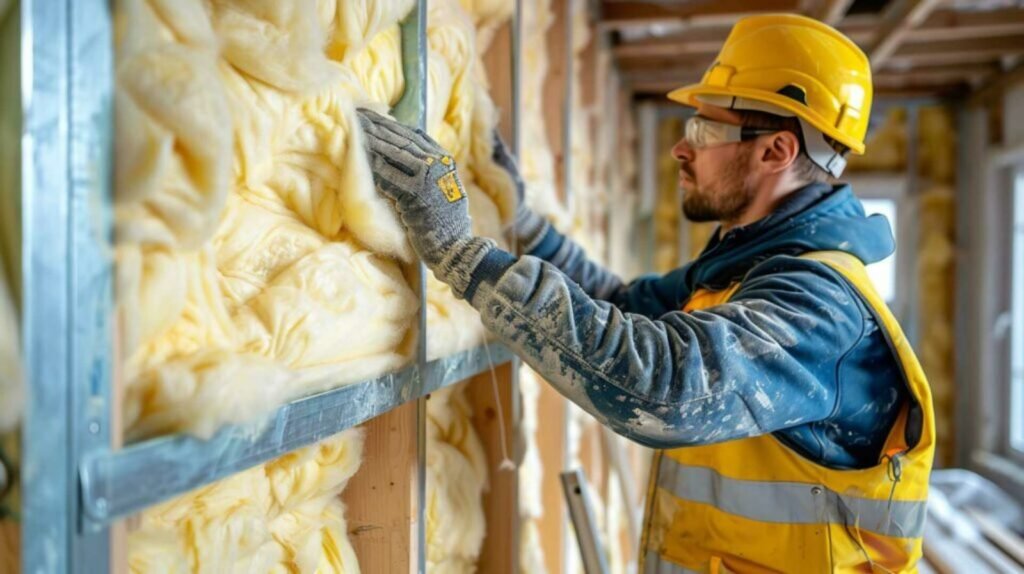Removing old insulation might seem like a manageable DIY project, especially if you’re used to doing basic home improvement tasks. But before you throw on a mask and start ripping it out, it’s important to think about what you might be dealing with. Depending on the type and age of the insulation, it could pose risks to your health or your home’s safety. This is why many homeowners start by searching for an Insulation Removal Expert Near Me to get professional guidance or service.
What You Need to Know Before Starting
Old insulation isn’t always just dusty fiberglass. In older homes, it could contain harmful materials like asbestos or mold. Some older insulation materials also break down into fine particles that can easily be inhaled, causing irritation or long-term health problems. Before doing anything, you need to know what type of insulation you’re dealing with and what condition it’s in.
Types of Insulation That Can Be Hazardous
One of the most concerning materials is vermiculite insulation, which may contain asbestos, a known carcinogen. Even if your insulation looks like harmless fluff, it might still carry hazards—especially if it’s deteriorating or has been exposed to moisture over time. Fiberglass can irritate the skin and lungs, and cellulose insulation can hold onto moisture, encouraging mold growth. All of these risks make removal more complex than it appears.
How Improper Removal Can Cause More Harm Than Good
Tearing out insulation without proper containment or protective gear can release dangerous fibers or contaminants into the air. These particles may linger, impacting your indoor air quality long after the job is done. Improper removal can also damage your attic structure or wiring, especially if insulation is packed around fixtures, pipes, or vents. This can lead to higher repair costs later.
Safety Gear Is Not Optional
If you’re determined to tackle the job yourself, the absolute minimum safety equipment includes a quality respirator, gloves, goggles, and full-body coveralls. A dust mask from the hardware store won’t cut it. You’ll also need heavy-duty trash bags and a safe way to dispose of the waste. Even with all this in place, you still might not be fully protected from mold spores or hidden asbestos.
Disposal Rules Vary by Area
Old insulation can’t just be thrown in your weekly trash. Depending on local laws, insulation might need to be taken to a special disposal site. You may also need to follow guidelines on how to bag and transport it. Failing to do this properly could lead to fines or penalties, not to mention environmental damage.
Moisture and Mold: Hidden Dangers
One major issue with old insulation is water damage. If the material has gotten wet—even just slightly—it could be harboring mold or mildew. Mold exposure can lead to serious respiratory problems and is especially dangerous for people with allergies or asthma. Removing moldy insulation without sealing off the space can spread spores throughout the entire house.
Working in Tight, Uncomfortable Spaces
Attics and crawlspaces are cramped, hot, and often unsafe. You may be navigating beams, exposed nails, or uneven flooring while handling materials that irritate your skin and lungs. This increases the chances of an accident, especially without proper lighting or ventilation. Professional crews are trained to move safely through these spaces and minimize risks.
Wildlife and Pests Can Add to the Problem
Rodents and insects love making nests in insulation. Old insulation may be filled with droppings, urine, or even live pests. Cleaning up after wildlife isn’t just gross—it’s also dangerous. Droppings from rodents can carry diseases that become airborne during removal. This is another reason to think twice before handling the job yourself.
Professionals Use Proper Tools and Containment
Trained crews use specialized vacuums, containment barriers, and ventilation systems that make the removal process safer and more thorough. They also know how to identify hidden issues, like damaged wiring or poor ventilation, that a DIYer might overlook. Hiring professionals may cost more upfront, but it often prevents costly mistakes and health risks down the road.
Knowing When It’s Time to Call for Help
If your home is more than 20 years old, or you suspect mold or pest damage, it’s usually safer to get a professional opinion. Even a simple inspection can reveal issues you wouldn’t notice. A trained insulation removal expert can tell you whether the material needs to be tested for asbestos, and if the removal job is safe to do on your own—or best left to a team with the right equipment.
Final Thought:
Old insulation might not seem dangerous at first glance, but it can hide serious risks. While it’s tempting to handle home projects on your own to save money, this is one area where professional help is often worth it. The risks to your health, home, and budget just aren’t worth taking lightly. If you’re unsure, it’s always safer to consult an expert and protect both your family and your home.











Leave a Reply